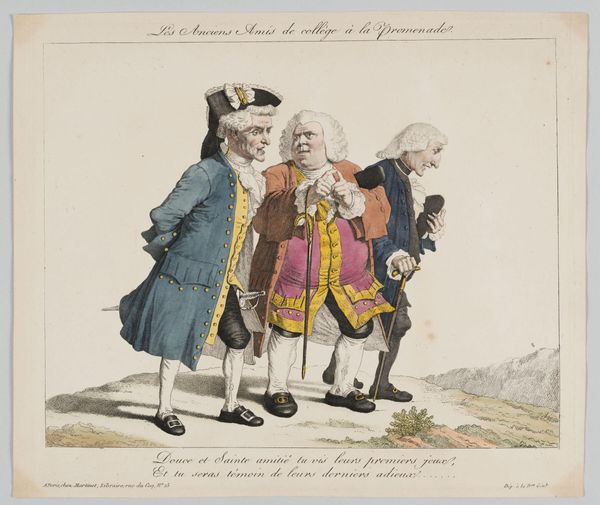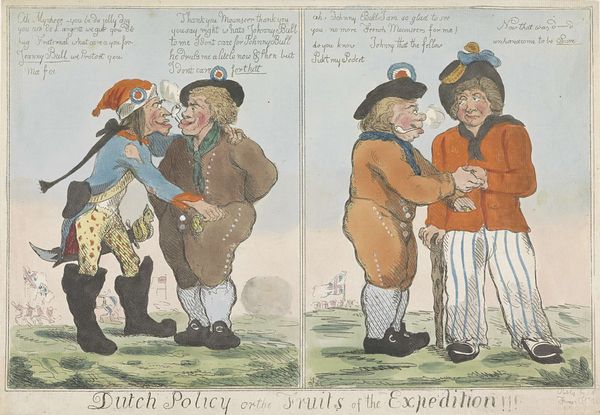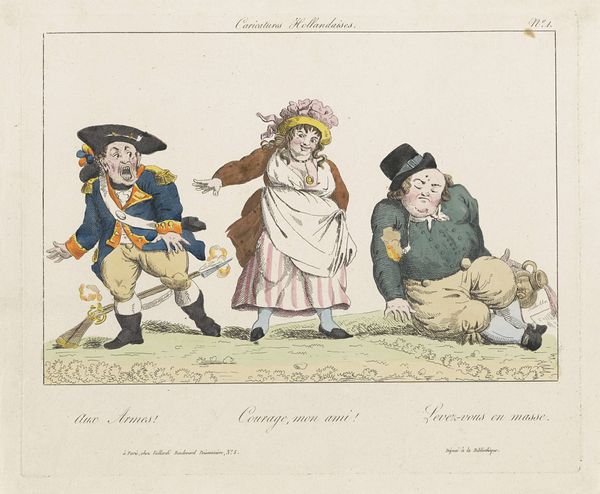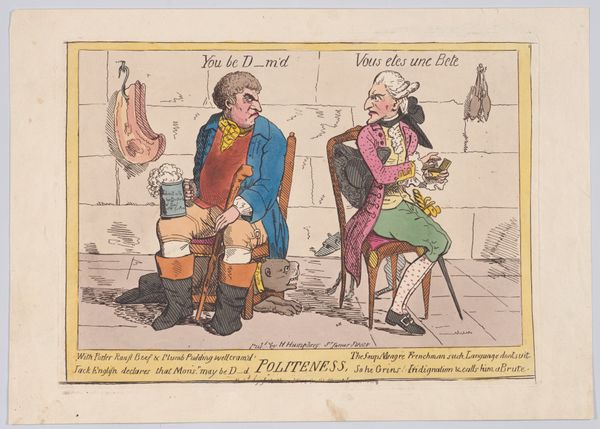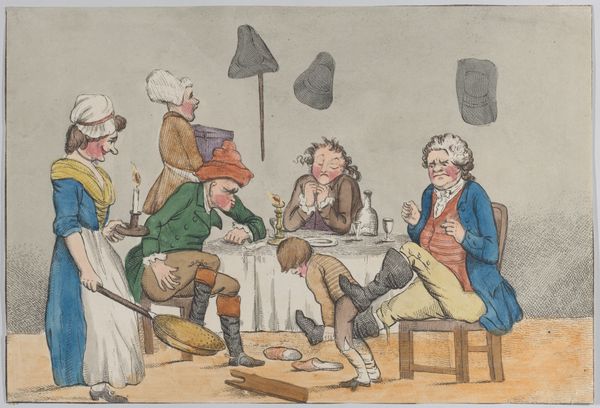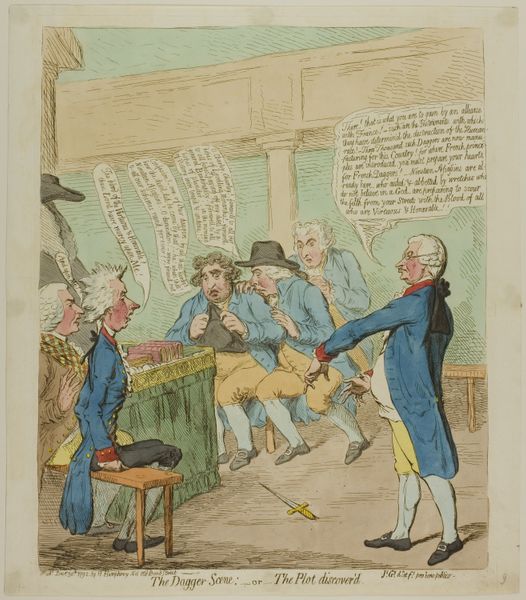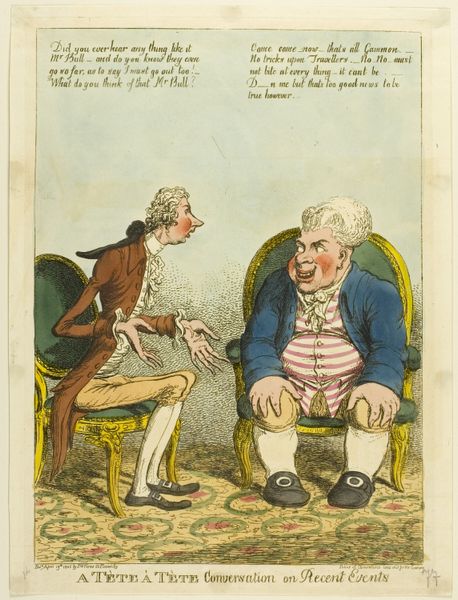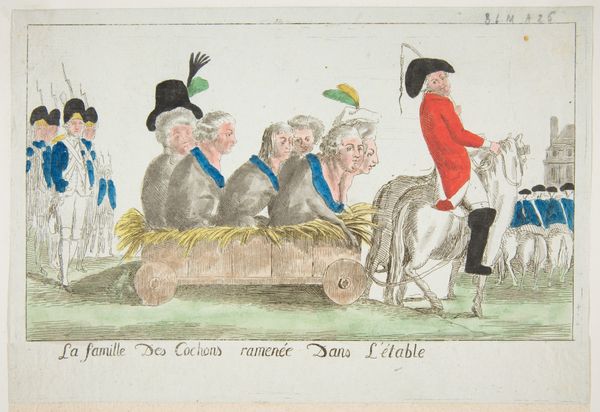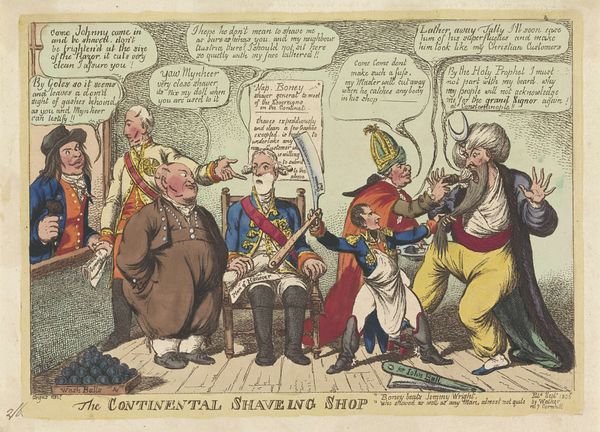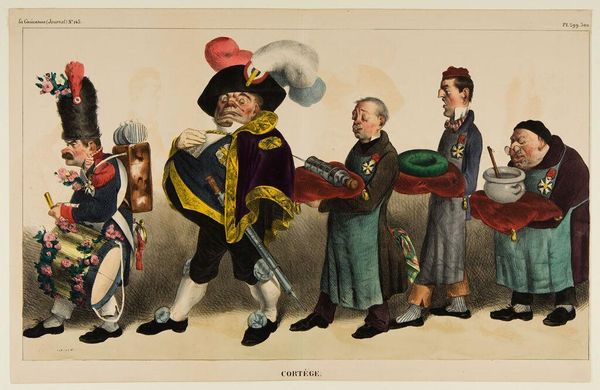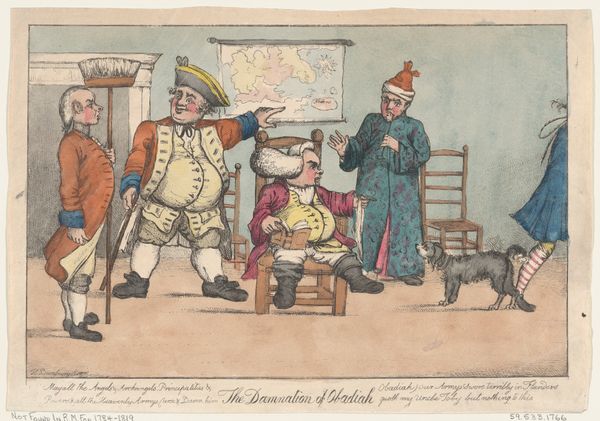
print, watercolor
#
portrait
#
neoclacissism
# print
#
caricature
#
caricature
#
watercolor
#
watercolour illustration
#
history-painting
Dimensions: height 167 mm, width 243 mm
Copyright: Rijks Museum: Open Domain
Editor: This is "Spotprent op de gelijkheid en broederschap, 1795," a watercolor print by Hermanus Fock. The three figures, each so distinct, seem to resist the very idea of brotherhood implied by the title. What's your take on it? Curator: It's a powerful visual statement about the fractures within revolutionary ideals. Fock's work, especially given its creation during the Batavian Republic, provides insight into the social tensions masked by slogans of 'equality and fraternity'. What do you make of the tools each figure carries, and how might those relate to the socio-political landscape of the time? Editor: Well, the axe suggests the peasant class, the rifle maybe the citizen militia, and the wig... perhaps the old order? Curator: Precisely. Consider this image as a commentary on class conflict. The print uses caricature to critique the very real power dynamics at play. This wasn't a unified revolution but a negotiation – often a struggle – between competing interests and ideologies. What does the garland above them suggest to you? Is it a genuine symbol of unity, or something else? Editor: Perhaps it's more ironic than sincere, given the expressions and weapons they're holding. It feels like a forced unity. Curator: Indeed. And think about who isn't represented here. Where are the women, the people of colour, in this supposed brotherhood? This caricature forces us to confront the limitations and exclusions inherent in the rhetoric of revolution. It serves as a potent reminder of how easily ideals can be co-opted and manipulated. Editor: I see it now, it's much more complex than I initially thought! Curator: Exactly. Art offers a crucial lens for examining how social narratives are constructed and deconstructed. This print challenges us to look beyond the surface and ask who truly benefits from claims of equality.
Comments
No comments
Be the first to comment and join the conversation on the ultimate creative platform.
